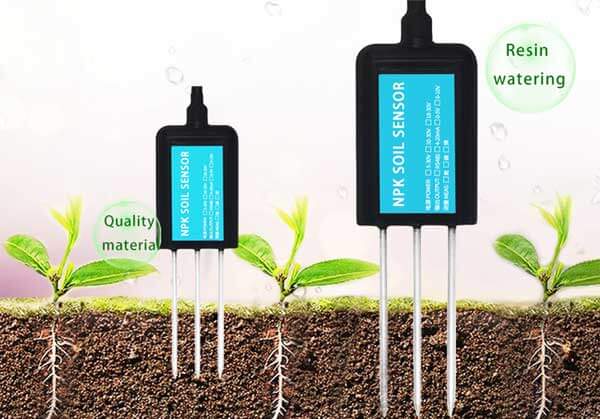The Internet of Things (IoT) has revolutionized the way we interact with technology, and its applications extend to various industries. In agriculture, low-cost soil sensors have emerged as a game-changer, enabling farmers to monitor soil conditions in real-time. This article explores the benefits, applications, and challenges associated with the use of low-cost soil sensors for IoT in agriculture.

Enhanced Precision Agriculture:
Low-cost soil sensors offer an affordable solution for precision agriculture. These sensors can measure essential soil parameters such as moisture content, temperature, pH levels, and nutrient concentrations. By collecting data on these factors, farmers can make informed decisions about irrigation scheduling, fertilizer application, and crop management practices. This precision approach optimizes resource usage, enhances crop yield, and promotes sustainable farming practices.
Water Conservation:
Water scarcity is a significant concern in agriculture. Low-cost soil sensors help farmers optimize water usage by providing accurate information about soil moisture levels. By monitoring soil moisture content in real-time, farmers can determine the optimal time for irrigation, reducing water waste and minimizing the risk of over or under-watering. This promotes efficient water management and helps conserve this precious resource.
Nutrient Management:
Proper nutrient management is crucial for healthy plant growth and maximum crop yield. Low-cost soil sensors enable farmers to monitor nutrient levels in the soil and adjust fertilizer application accordingly. By understanding the nutrient needs of crops, farmers can avoid excessive fertilizer usage, prevent nutrient runoff, and minimize environmental pollution. This approach ensures that plants receive the necessary nutrients without compromising soil quality.
Disease and Pest Management:
Soil conditions play a vital role in the occurrence and spread of plant diseases and pests. Low-cost soil sensors can provide early detection of soil conditions conducive to disease development, such as excessive moisture or imbalanced nutrient levels. By receiving timely alerts, farmers can take preventive measures, such as adjusting irrigation or applying targeted treatments, to minimize the risk of crop diseases and pests. This proactive approach reduces the need for chemical interventions and promotes environmentally friendly pest management practices.
Cost-Effectiveness:
Traditional soil testing methods are often expensive and time-consuming. Low-cost soil sensors offer a cost-effective alternative, allowing farmers to monitor soil conditions regularly without significant financial investment. These sensors are easy to install, require minimal maintenance, and provide real-time data, saving farmers time and resources. By adopting low-cost soil sensors, farmers can access valuable information that was previously inaccessible or prohibitively expensive.
Connectivity and Data Analysis:
Low-cost soil sensors are designed to integrate seamlessly into IoT systems, enabling connectivity and data analysis. These sensors can transmit data wirelessly to a central hub or cloud-based platform, where the information is processed and analyzed. By leveraging advanced analytics and machine learning algorithms, farmers can gain valuable insights into soil health, crop performance, and environmental conditions. This data-driven approach empowers farmers to make data-backed decisions, optimize farming practices, and improve overall productivity.
Challenges to Overcome:
While low-cost soil sensors offer significant benefits, several challenges need to be addressed for widespread adoption:
a) Sensor Accuracy:
Ensuring the accuracy and reliability of low-cost soil sensors is essential, as inaccurate data can lead to incorrect decisions. Manufacturers need to focus on continuous advancements in sensor technology and calibration techniques.
b) Standardization:
The lack of standardized protocols for data transmission and sensor integration poses challenges for interoperability between different sensor brands and IoT platforms. Establishing industry standards would facilitate seamless integration and data sharing.
c) Data Security:
With the increasing reliance on IoT and cloud platforms, data security becomes critical. Stakeholders need to implement robust security measures to protect sensitive data from unauthorized access.
d) User Education:
Farmers may require training and education on how to interpret sensor data and translate it into actionable insights. Initiatives should be taken to provide farmers with the necessary knowledge and skills to leverage low-cost soil sensors effectively.

Conclusion:
Low-cost soil sensors for IoT have immense potential to revolutionize agriculture by enabling precision farming, promoting water and resource conservation, and improving crop productivity. By leveraging the benefits of connectivity and data analysis, these sensors empower farmers to make informed decisions, optimize farming practices, and contribute to sustainable agriculture. However, addressing challenges related to accuracy, standardization, data security, and user education is crucial for successful implementation. With continued advancements in technology and increased awareness, low-cost soil sensors have the potential to transform the agricultural landscape and contribute to global food security.
